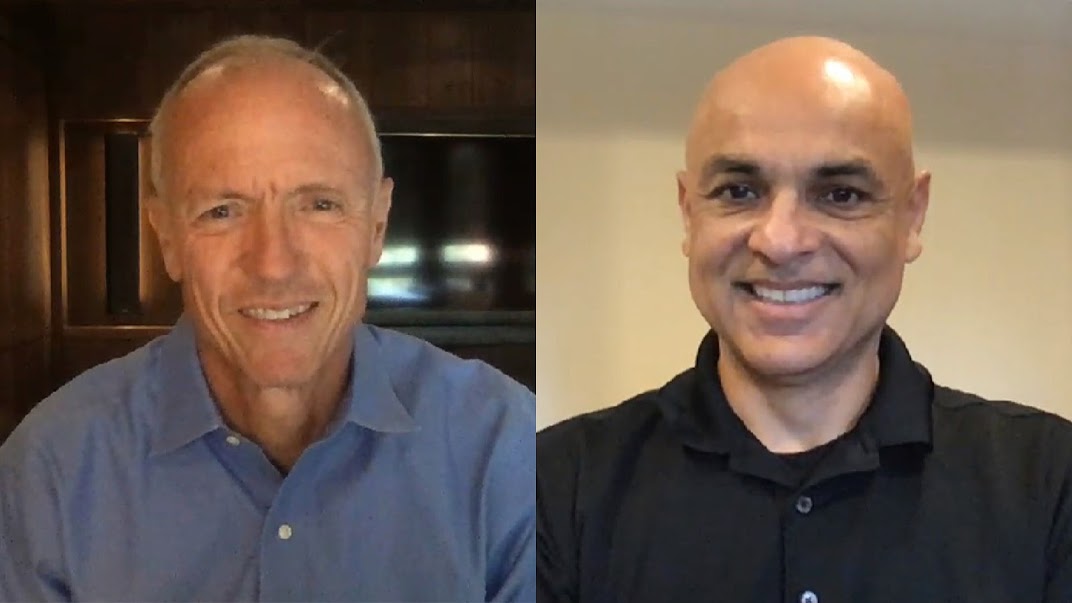 INFRA
INFRA
 INFRA
INFRA
 INFRA
INFRA
VMware Inc. and Zscaler Inc. have partnered to reimagine how network architecture works in a world fundamentally changed by the COVID-19 pandemic.
“Networks were built in a very different time,” said Tom Gillis (pictured, left), senior vice president and general manager of networking and security at VMware. “Networks were built when work was a place that you came; now work is a thing that you do, oftentimes you do from your living room or your den, as I am. And so it really calls into question some of the fundamental principles of how we build and deploy networks.”
Gillis and Punit Minocha (pictured, right), executive vice president of business and corporate development at Zscaler, spoke with John Furrier, co-host of theCUBE, SiliconANGLE Media’s livestreaming studio, during VMworld. They discussed the current state of network architecture and how much current circumstances dictate a different approach. (* Disclosure below.)
As the COVID-19 pandemic swept the globe, company after company sent workers home to continue doing their jobs remotely. Many employees and companies alike have been thrilled with the change, with Twitter, Google, Facebook, Apple and others committing to long-term remote work options. Despite the benefits, however, network connectivity has been the major weak point. Few homes have the connectivity and infrastructure most businesses do, making collaboration, video conferencing and remote work in general a far more laborious task than it should be.
VMware and Zscaler have been working to improve network architecture by focusing on the edge rather than the old-style major hubs.
“Imagine having to get out to the internet through four major international airports worldwide, all right? So you couldn’t directly traverse from point A to point B, but you had to transit through these four. It would be very inefficient,” Minocha said. “It would really slow you down. And more often than not, you’ll be complaining. That was the old network architecture. And what we have chosen to do here from a security standpoint at Zscaler is make that security closer to the end user.”
To help alleviate the situation, VMware shipped out 8,000 boxes to customers to better manage their network and address the connectivity and security issues as close to the end user as possible.
“We were able to ship these customers more than 8,000 boxes over the course of two weeks into people’s homes,” Gillis said. “So think of a little tiny device about the size of a set top box. It shows up in your house, and all of a sudden your Zoom or your WebEx sessions just work. No more stuttering, no more breaking up, because we’re able to manage the network and virtualize, prioritize traffic, and deliver a consistently good end-user experience. So managing the quality of service is a foundational capability, and we have unique ways to do that with virtualization that I think never existed before.”
These kinds of scenarios are exactly why the partnership between VMware and Zscaler makes perfect sense, according to Gillis and Minocha. Zscaler stared out focusing on bringing network security closer to the user, while VMware was focusing on virtualizing as much of the network as possible. Together, the two companies bring a completely distributed network architecture to bear. In addition, VMware’s solution is designed to be easy for anyone to use, including those without a technical background, according to Gillis.
It’s a safe bet that as companies and workers continue to adjust to a new normal, distributed computing and virtualized networking will become more important than ever.
Watch the complete video interview below, and be sure to check out more of SiliconANGLE’s and theCUBE’s coverage of VMworld. (* Disclosure: Zscaler Inc. sponsored this segment of theCUBE. Neither Zscaler nor other sponsors have editorial control over content on theCUBE or SiliconANGLE.)
Support our mission to keep content open and free by engaging with theCUBE community. Join theCUBE’s Alumni Trust Network, where technology leaders connect, share intelligence and create opportunities.
Founded by tech visionaries John Furrier and Dave Vellante, SiliconANGLE Media has built a dynamic ecosystem of industry-leading digital media brands that reach 15+ million elite tech professionals. Our new proprietary theCUBE AI Video Cloud is breaking ground in audience interaction, leveraging theCUBEai.com neural network to help technology companies make data-driven decisions and stay at the forefront of industry conversations.